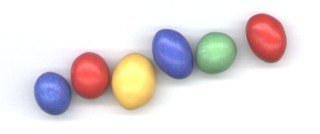
Google is named after Googol, which is the digit 1 followed by one hundred zeros (in decimal representation).
The term was coined in 1920 by nine-year-old Milton Sirotta, nephew of American mathematician Edward Kasner. Kasner popularized the concept in his book Mathematics and the Imagination.
A googol is of the same order of magnitude as the factorial of 70 (70! being approximately 1.198 googol, or 10 to the power 100.0784), and its only prime factors are 2 and 5 (100 of each). In binary it would take up 333 bits.
The googol is of no particular significance in mathematics, but is useful when comparing with other incredibly large quantities such as the number of subatomic particles in the visible universe or the number of possible chess games. Kasner created it to illustrate the difference between an unimaginably large number and infinity, and in this role it is sometimes used in teaching mathematics. Indeed, it is not even a round figure. Its formal name is ten duotrigintillion.
Read the complete history.
Let's analyze Google:
Google's buildings are numbered 0, 1, e, π, and Φ(phi); all of which have mathematical significance.
Google's first IPO raised $2,718,281,828, which is the product of "e" and $1 billion, where "e" is the base of the natural logarithm.
For their second public offering Google will sell 14,159,265 shares, which is the first 8 digits after the decimal point in π = 3.14159265....
Google played with numbers to select and attract mathematicians, as Google loves numbers. There were the numbers again: π and e.
Now let's analyze Google colors:
You probably see Google logo at least once a day, but you certainly don't remember the colors. Anyway, take a closer look at the Google logo:
They neither decided which colors to pick nor just a random pick, so Google will not do anything random or without a reason. And the colors don't appear random. When we take a closer look at the colors and play around you'll see the earlier mentioned favorite number "e" again.
The colors of the logo are blue red yellow blue green red. So that makes brybgr. Seems meaningless, but let's get it going on in Google-style and translate this to the numbers of the alphabet -> a=1, ..., z=26.
brybgr = 2 18 25 2 7 18
2718 looks familiar, and it's nothing more than the mentioned number "e" again!

The colors may explain in Google-style how they did come from googol(plex) to Google. The only thing we have to do is solve it.
See also for Googolplex.
Names of large numbers.












0 comments:
Post a Comment